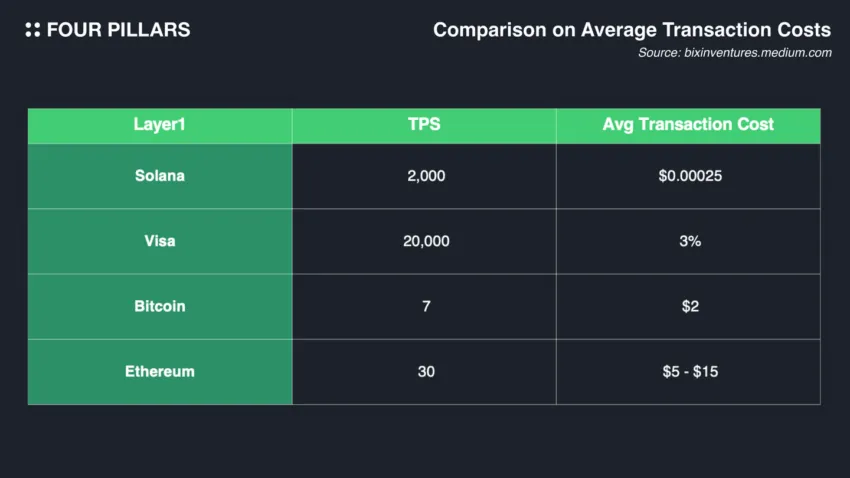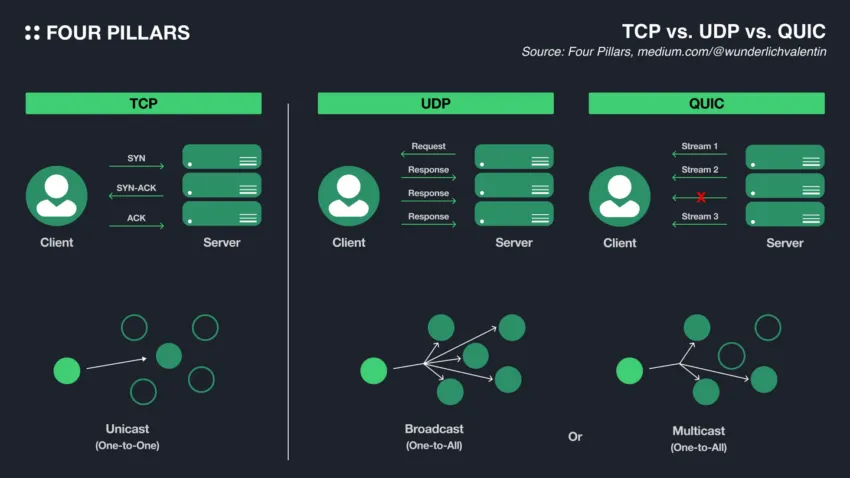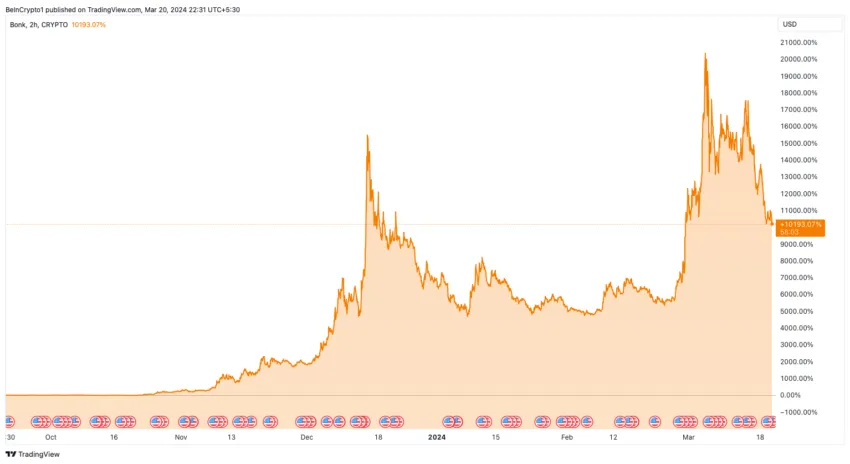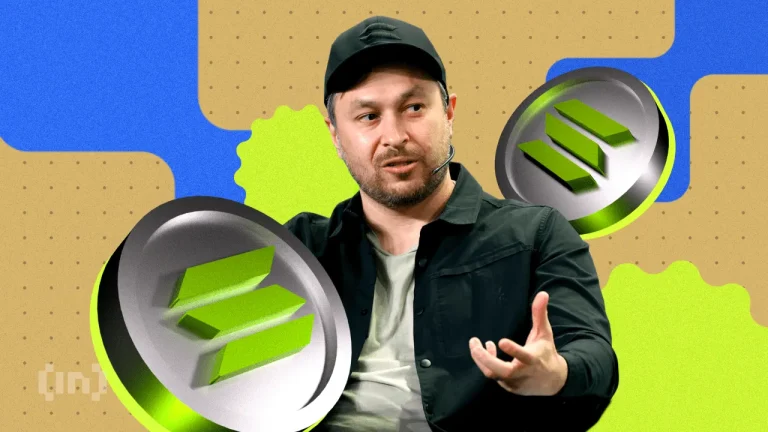New research suggests that Solana has emerged as a prominent figure. It draws comparisons with tech giant Apple, especially regarding its innovative approach to integrating hardware and software.
However, Solana's appeal extends beyond just another Apple imitation. Unlike Apple's hardware-focused approach, Solana flips the equation, focusing on leveraging hardware to enhance and expand the Web3 experience.
How does Solana stand out in the cryptocurrency market?
Co-founder Raj Gokal often expresses Solana's vision as the “apple of cryptocurrencies.” It highlights the ambition to innovate through software, offering new functions and experiences rather than just facilitating hardware sales.
Although this analogy is apt to showcase Solana's dedication to performance and user experience, it only scratches the surface. According to researchers at Four Pillars, the true essence of Solana lies in its network performance, which is powered by multiple threads for parallel processing.
This technical prowess has attracted hands-on developers eager to explore Solana's potential during the DeFi and NFT boom. Its ability to offer fast transactions with low fees has quickly made it a competitor to Ethereum.
“Solana is capable of processing thousands of transactions per second, with block times recorded at 400-500 milliseconds – much higher performance than current blockchains. Ultimately, Solana’s adoption of this technical approach aims to achieve two missions: a scalable platform that can handle “With high usability and composability between applications,” the researchers at Four Pillars wrote.

The commitment of those who shared Solana's vision has not wavered. In fact, focusing on enhancing network stability and addressing technical challenges has helped boost community confidence.
Solana addressed vulnerabilities in its network, by adopting the QUIC protocol for reliable communications and introducing weighted Quality of Service (QoS) to prioritize traffic based on SOL quotas. In addition, the introduction of a local fee market has helped reduce spam and encourage efficient use of the network.
“QUIC is a new communication protocol based on UDP, maintaining its advantages while simplifying TCP connection flows and handshake processes. Thus, QUIC allows Solana to achieve reliable communication, requiring retransmission of only the flows that suffer from packet loss, and continuing to transmit the rest without interruption, enabling Significantly enhances network efficiency.
Read More: 13 Best Solana (SOL) Wallets to Consider in March 2024

Central to Solana's ethos is community and ecosystem development. Initiatives like the BONK meme airdrop have incentivized the Solana community by allocating 5% of the total supply to developers. This distribution brought the community together and led to significant growth within the ecosystem as developers participated in the reconstruction efforts.
Remarkably, the value of the memecoin rose by 20,400% from its lowest point, creating a positive feedback loop that renewed interest in Solana. This surge resulted in 30 million BONK tokens being distributed to Saga mobile users. This amplified interest in both BONK and Solana.
Additionally, various platforms within the ecosystem, such as Jito, Pyth Network, and Jupiter, announced their own airdrop strategies, further energizing the market enthusiasm. Other entities in the ecosystem such as Tensor, Marginfi, Zeta, and Pacl have revealed plans for airdrop-related incentives as well.

Solana's strategic initiatives extended beyond technical improvements and airdrops. By pioneering areas such as decentralized physical infrastructure network (DePIN) and seamless payments for crypto assets, Solana is actively bridging the gap between blockchain and traditional financial systems. Partnerships with industry giants like Circle and Visa reflect a trusted stance in the cryptocurrency payments space.
Furthermore, Solana's commitment to diversity in validator clients and decentralization reflects its dedication to network stability and security. Initiatives aimed at reducing the operational costs of running a node and increasing the Nakamoto coefficient reflect Solana's careful approach to scalability and decentralization.
Such developments have attracted institutional interest, as evidenced by positive comments made by Ark Invest CEO, Cathie Wood.
“Solana is doing a really good job. If you look at Ethereum, it was faster and cheaper than Bitcoin at the time. Solana is faster and more cost-effective than Ethereum,” Wood said.
Read more: Solana (SOL) Price Forecast 2024/2025/2030
As Solana continues to scale its business and solidify its internal foundation, it is cementing its position as a leader in the cryptocurrency market, reminiscent of Apple's influence in technology.
Disclaimer
Adhering to the Trust Project guidelines, BeInCrypto is committed to unbiased and transparent reporting. This news article aims to provide accurate and timely information. However, readers are advised to verify the facts independently and consult with a professional before making any decisions based on this content. Please note that our Terms and Conditions, Privacy Policy and Disclaimer have been updated.

